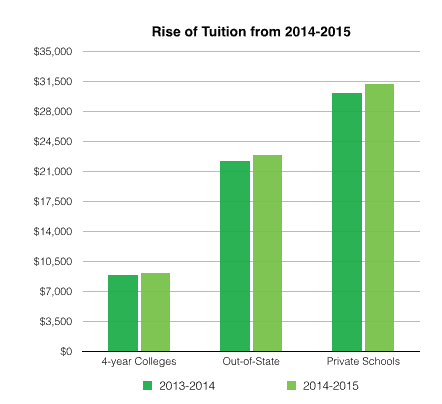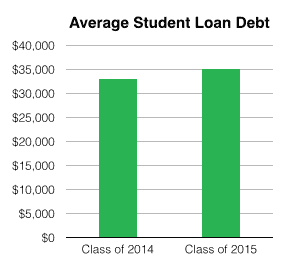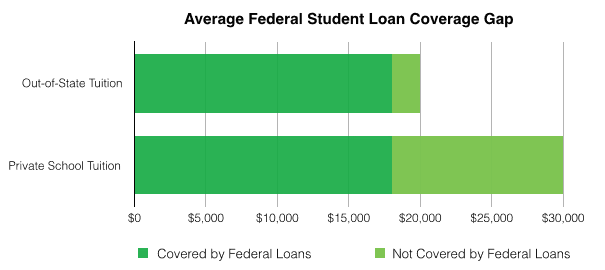July 21, 2015

Congrats, you just graduated from high school! Here are some recent statistics on student loans that you should know about as you progress towards a college degree.
1. Average Tuition Keeps Climbing

Pursuing a higher education has become the norm for most high school students even though the costs associated with it continues to rise.
- In the 2014-2015 school year, the average yearly tuition for public, in-state 4-year colleges and universities was $9,130. That’s up $254 from the previous school year, an increase of 2.9%.
- For out-of-state students at public institutions, the average yearly tuition was $22,958, up 3.3% from the previous year.
- Private schools top the chart with an average yearly tuition of $31,231, a 3.7% increase from the previous year.
- Average tuition has increased 29% since 2000 for private schools and 48% for public schools.
2. The Class of 2015 Has the Most Debt in History

It may not be a huge surprise, but the class of 2015 officially graduated with more student loan debt than the country has ever seen.
- Graduating students left school with an average of $35,051 in loan debt. That’s $2,000 more than the class of 2014, or a 6% jump in debt loads in just one year.
3. Most Students Graduate with Debt
Even while the dollar amount of debt continues to rise, students still have little choice about whether they should take out a loan.
- The number of students graduating with loans has remained stable over the last few years, at around 70%.
4. Federal Loans May Not Cover All Expenses

In most cases, federal aid is not enough to cover all the expenses of higher education; which includes room, board, transportation, and other expenses.
- Federal loans typically cover about $18,000/year which is not enough to pay for out-of-state tuition that may be over $20,000/year, or private school tuitions that can be over $30,000/year. Private student loans may be a solution to fill the funding gap.
5. Most Private Loans Require a Cosigner
You’re not likely to have much of a credit history or income when you’re straight out of high school, so student loans continue to require a cosigner in most cases, especially when they’re private student loans.
- The rate of private loans requiring cosigners has remained steady at around 90% over the last decade.
Before you start feeling overwhelmed by the numbers, you should submit the FAFSA to see if you qualify for any federal aid. You will need to understand parent and student assets so you can get the most federal aid you are eligible to receive.
Please note that the information provided on this website is provided on a general basis and may not apply to your own specific individual needs, goals, financial position, experience, etc. LendKey does not guarantee that the information provided on any third-party website that LendKey offers a hyperlink to is up-to-date and accurate at the time you access it, and LendKey does not guarantee that information provided on such external websites (and this website) is best-suited for your particular circumstances. Therefore, you may want to consult with an expert (financial adviser, school financial aid office, etc.) before making financial decisions that may be discussed on this website.




